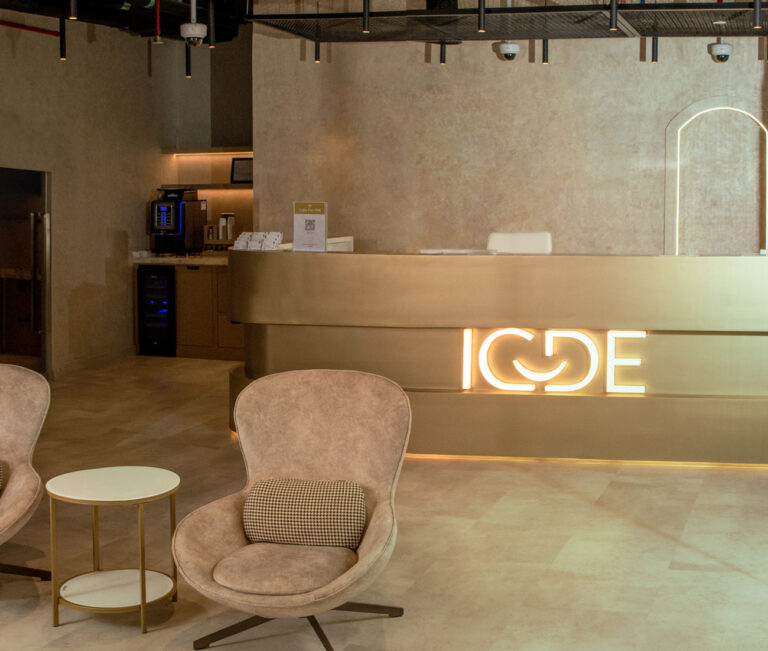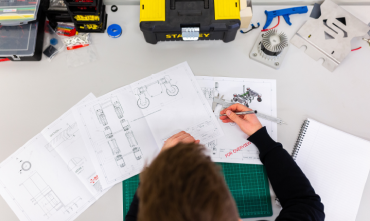

Steps To Organize A Drawing Class For Kids
Organizing a drawing class for kids can be a rewarding experience that nurtures creativity and self-expression. Whether you are an art teacher, a parent, or an art enthusiast looking to share your skills, creating an engaging and fun drawing class requires thoughtful planning and preparation. Here’s a step-by-step guide to help you organize successful drawing classes for kids in Dubai.
Define your class objectives:
Before you start planning your class, it’s important to define what you want the kids to achieve by the end of the course. Are you aiming to teach basic drawing skills, introduce them to different art mediums, or focus on a specific theme like animals or nature? Having a clear objective will help you structure your lessons and choose appropriate activities. It’s also important to consider the age group you’re targeting, as this will influence the complexity of the tasks and the teaching methods you use.
Choose a right location:
Selecting the right location is important for a successful drawing class. If you’re conducting the class at a school or community center, ensure that the space is child-friendly, well-ventilated, and has plenty of natural light. The area should be spacious enough to accommodate all the participants comfortably and have tables and chairs suitable for drawing. If you’re hosting the class at home, set up a dedicated space free from distractions, with easy access to art supplies and materials.
Gather art supplies and materials:
Once you’ve decided on the location, the next step is to gather all the necessary art supplies and materials. For a basic drawing class, you’ll need paper, pencils, erasers, colored pencils, markers, and perhaps some crayons. Depending on the class’s focus, you may also want to include other materials like charcoal, pastels, or watercolors. Ensure to have enough supplies for every participant and consider providing aprons or old shirts to protect their clothing from any mess.
Plan your lessons and activities:
Effective lesson planning is key to keeping kids engaged and excited about drawing. Start by breaking down your class into manageable segments, such as warm-up exercises, demonstrations, and hands-on practice. Incorporate a variety of activities that cater to different skill levels and learning styles. For example, you could begin with a simple drawing exercise, followed by a guided demonstration on shading techniques, and end with a fun, creative project like drawing their favorite animal or character.

The Vital Role Of Renewable Energy Companies In Advancing Environmental Sustainability
Renewable energy companies are at the forefront of efforts to combat climate change and promote environmental sustainability. Their role extends beyond simply providing alternative energy sources; they are vital in shaping a greener future. Here’s how these renewable energy companies in UAE contribute to environmental well-being and drive global sustainability.
Reducing greenhouse gas emissions:
One of the primary roles of renewable energy companies is to reduce greenhouse gas emissions, which are major contributors to climate change. By exploring energy from renewable sources such as solar, wind, and hydropower, these companies offer cleaner alternatives to fossil fuels. Unlike traditional energy sources, renewables do not emit carbon dioxide or other harmful pollutants during operation. This reduction in greenhouse gases helps mitigate global warming and improves air quality, leading to healthier ecosystems and communities.
Promoting energy efficiency:
Renewable energy companies are focused on generating clean power and also on improving energy efficiency. Advances in technology and innovative practices contribute to more efficient energy production and consumption. For example, solar panels and wind turbines are becoming increasingly efficient, capturing more energy from natural sources. Additionally, companies often implement energy-saving measures in their operations and advocate for energy efficiency in the broader energy market. This focus on efficiency reduces overall energy demand and helps conserve resources.
Supporting biodiversity and ecosystem health:
The impact of renewable energy on biodiversity and ecosystem health is generally positive compared to conventional energy sources. By reducing reliance on fossil fuels, renewable energy companies help prevent habitat destruction, water pollution, and soil degradation associated with traditional energy extraction and combustion. Also, many renewable projects, such as solar farms and wind installations, are designed with environmental considerations in mind, including site selection and ecological impact assessments. This approach helps to preserve natural habitats and protect wildlife.
Driving technological innovation:
Renewable energy companies play a vital role in advancing technological innovation. Continuous research and development in renewable technologies lead to more efficient, cost-effective, and environmentally friendly solutions. Innovations such as advanced battery storage, smart grids, and next-generation solar panels are changing the energy land. By investing in and deploying innovative technologies, these companies contribute to a more sustainable energy system and drive progress towards a low-carbon future.

Understanding The Process Of Metal Fabrication Services
Metal fabrication is an important process in manufacturing and construction industries, involving the shaping, cutting, and assembly of metal components to create structures and products. Here’s an overview of the key stages involved in metal fabrication services:
Design and planning
The metal fabrication process begins with detailed design and planning. Engineers and designers collaborate to create precise blueprints or CAD (Computer-Aided Design) drawings that specify dimensions, materials, tolerances, and finishing requirements. This stage ensures clarity in fabrication goals and adherence to client specifications.
Material selection
Choosing the right metal material is vital to meet project requirements regarding strength, durability, corrosion resistance, and cost-effectiveness. Common metals used in fabrication include steel, aluminum, stainless steel, and copper. Factors such as structural integrity, environmental conditions, and aesthetic considerations influence material selection.
Cutting
Once materials are selected, cutting processes commence to shape metal into required sizes and shapes. Techniques such as sawing, shearing, laser cutting and plasma cutting are employed based on material type, thickness, and complexity of designs outlined in the initial plans.
Forming
Forming operations involve bending, shaping, and molding metal sheets or bars into desired configurations. Methods like press braking, rolling, punching, and deep drawing are utilized to achieve precise angles, curves, and contours as per design specifications. Forming improves structural integrity and prepares components for assembly.
Assembly
Assembly integrates individual metal components into larger assemblies or finished products. Techniques such as welding, bolting, riveting, and adhesive bonding are employed to join parts securely. Skilled welders use various welding methods, including MIG (Metal Inert Gas), TIG (Tungsten Inert Gas), and arc welding, ensuring strong and durable connections.
Finishing
After assembly, metal surfaces undergo finishing processes to improve aesthetics, protect against corrosion, and improve functionality. Finishing techniques include grinding, sanding, polishing, painting, powder coating, and electroplating. Surface treatments are applied based on project requirements and client preferences, ensuring the final product meets desired appearance and performance standards.
Throughout fabrication, rigorous quality control measures are implemented to verify dimensional accuracy, material integrity, and adherence to specifications. Inspection tools such as calipers, gauges, and CMMs (Coordinate Measuring Machines) are used to validate each stage of the fabrication process. Inclusive testing ensures finished products meet industry standards and client expectations.

The Role Of A Wealth Management Company In Financial Planning
Are you looking for a trusted partner to guide you through your financial planning journey? Then a wealth management company might just be what you need. Wealth management refers to the professional services provided by a financial institution or firm to help individuals and families manage their wealth. This includes managing investments, planning for retirement, tax planning, and estate planning, among other services.
Here’s a detailed exploration of the role of a wealth management company in Dubai in financial planning:
Inclusive financial assessment:
Wealth management firms begin by conducting a thorough assessment of their clients’ financial status, goals, risk tolerance, and time horizons. This assessment forms the foundation of personalized financial planning strategies tailored to meet specific needs and objectives. By understanding clients’ current financial positions and aspirations, wealth managers develop holistic plans that encompass various aspects of financial life, including retirement planning, estate planning, tax optimization, and wealth preservation.
Strategic investment management:
A core function of wealth management companies is strategic investment management. Advisors utilize their expertise in asset allocation, portfolio diversification, and risk management to construct investment portfolios aligned with clients’ financial objectives and risk profiles. They monitor market trends, analyze investment opportunities, and implement disciplined investment strategies designed to optimize returns while mitigating risks. By utilizing their market insights and research capabilities, wealth managers aim to achieve long-term growth and capital preservation for their clients.
Tax planning and optimization:
Effective tax planning is integral to wealth management firms’ services, aiming to increase tax efficiency and optimize after-tax returns for clients. Advisors develop tax-efficient investment strategies, utilize tax-advantaged accounts (e.g., IRAs, 401(k)s), and implement tax-loss harvesting techniques to reduce tax liabilities and improve overall portfolio performance. By integrating tax considerations into financial planning, wealth managers help clients preserve wealth, minimize tax burdens, and capitalize on available tax incentives.
Estate and legacy planning:
Wealth management companies assist clients in planning for the transfer of wealth to future generations through inclusive estate planning strategies. Advisors collaborate with legal professionals to draft essential estate planning documents, including wills, trusts, powers of attorney, and healthcare directives. They address inheritance issues, minimize estate taxes, and ensure orderly asset distribution according to clients’ wishes, safeguarding family legacies and preserving wealth across generations.
Client education and empowerment:
Beyond managing investments and financial planning, wealth management firms consider client education and empowerment. Advisors educate clients on financial principles, investment strategies, and market dynamics to nurture informed decision-making and improve financial literacy. They provide regular updates, personalized guidance, and proactive communication on portfolio performance, market insights, and opportunities, empowering clients to make confident financial decisions aligned with their goals.

Step-By-Step Guide To Getting Dental Veneers
Dental veneers are thin, custom-made shells designed to cover the front surface of teeth to improve their appearance. They are a popular cosmetic dentistry option for improving the shape, size, color, and overall aesthetics of teeth. Here’s a step-by-step guide to what you can expect when getting dental veneers:
Initial consultation and evaluation
The process begins with an initial consultation with your dentist to discuss your goals and expectations for dental veneers. Your dentist will examine your teeth, gums, and overall oral health to determine if veneers are suitable for you. X-rays and impressions of your teeth may be taken to assist in planning the treatment.
Treatment planning
Once you decide to proceed with dental veneers, your dentist will develop a treatment plan tailored to your needs. This includes selecting the material for the veneers (typically porcelain or composite resin) and determining the shade that best matches your natural teeth or desired whiteness.
Preparing your teeth
To prepare your teeth for veneers, your dentist will gently reshape the front surface of the teeth to create space for the veneers. This involves removing a thin layer of enamel (about 0.5mm) from the tooth surface, which is equivalent to the thickness of the veneer to be placed. Local anesthesia may be used to ensure your comfort during this process.
Taking impressions
After reshaping your teeth, your dentist will take impressions or digital scans of your teeth. These impressions are sent to a dental laboratory where skilled technicians will custom-create your veneers to match the size, shape, and color specifications discussed during your consultation.
Temporary veneers (If Needed)
In some cases, temporary veneers may be placed on your teeth while your permanent veneers are being fabricated at the dental laboratory. These temporary veneers protect your prepared teeth and provide an aesthetic solution until your final veneers are ready.
Bonding the veneers
Once your custom veneers are ready, typically within a couple of weeks, you will return to the dentist for the final placement. Your dentist will check the fit and appearance of each veneer before permanently bonding them to your teeth using a special dental adhesive. The adhesive is cured with a light beam to secure the veneers firmly in place.

What Should I Consider When Choosing A Dental Center?
Choosing the right dental center is an important decision that directly impacts your oral health and overall well-being. Whether you’re looking for routine preventive care, cosmetic treatments, or restorative procedures, selecting a dental center Abu Dhabi that meets your needs and preferences ensures a positive dental experience.
Qualifications and experience of the dental team:
The qualifications and experience of the dental professionals are paramount. Ensure that the dentists and hygienists are properly licensed and have adequate training. Consider the dentist’s specialization if you have specific dental needs, such as orthodontics, periodontics, or cosmetic dentistry. A team with extensive experience can provide higher quality care and handle a wide range of dental issues effectively.
Range of services offered:
An inclusive dental center should offer a broad spectrum of services, from preventive care and routine cleanings to specialized treatments like root canals, dental implants, and orthodontics. Having access to a wide range of services less than one roof is convenient and ensures continuity of care. Check if the center provides emergency dental services for urgent needs.
Technology and equipment:
Modern dental technology can significantly improve the quality of care and patient experience. Look for a dental center that uses up-to-date equipment such as digital X-rays, intraoral cameras, and laser dentistry tools. Advanced technology can lead to more accurate diagnoses, less invasive treatments, and quicker recovery times.
Patient reviews and testimonials:
Patient reviews and testimonials provide insight into the quality of care and customer service at a dental center. Look for reviews on the center’s website, social media, and third-party review sites. Personal recommendations from friends, family, or colleagues can also be valuable. Positive feedback about a dental center’s service, cleanliness, and patient care is a good indicator of a reliable practice.
Location and office hours:
The dental center’s location and office hours should be convenient for you. Choose a center that is easily accessible from your home or workplace. Consider their hours of operation, especially if you need early morning, evening, or weekend appointments. Convenience can reduce stress and make it easier to keep regular appointments.
Insurance and payment options:
Dental care can be costly, so it’s important to choose a center that accepts your dental insurance. Verify that the center is in-network with your insurance provider. Additionally, inquire about their payment options and whether they offer financing plans for more expensive treatments. Transparent pricing and flexible payment options can make dental care more affordable.

Switching to Vaporesso Pods: What You Need to Know Before Making the Move
If you are considering making the switch from traditional vaping methods to using Vaporesso pods, this guide is for you. In this article, we will discuss everything you need to know before making the move to Vaporesso pods.
What are Vaporesso Pods?
Vaporesso pods Dubai are a type of vaping device that uses pre-filled or refillable pods to hold e-liquid and deliver nicotine to the user. The pods typically have a built-in coil and are designed to be used with specific Vaporesso devices, such as the Renova Zero, XROS, or Luxe PM40.
Why Switch to Vaporesso Pods?
There are several reasons why many vapers are choosing to switch to Vaporesso pods:
- Convenience: Vaporesso pods are compact and easy to use, making them ideal for on-the-go vaping.
- Customization: With refillable pods, you can choose your own e-liquid flavors and nicotine strengths, giving you more control over your vaping experience.
- Cost-effective: Vaporesso pods are often more cost-effective in the long run compared to traditional vaping methods.
- Less maintenance: Unlike traditional devices, which require frequent coil changes and cleaning, Vaporesso pods have a longer lifespan and require less maintenance.
What to Consider Before Making the Switch
Before making the switch to Vaporesso pods, here are some important factors to consider:
- Device compatibility: As mentioned earlier, Vaporesso pods are designed to be used with specific devices. Make sure your device is compatible with the pods you plan on using.
- Pod options: Vaporesso offers a variety of pod options, such as pre-filled or refillable, different capacities, and coil options. Consider which type of pod would best suit your vaping needs.
- E-liquid compatibility: If you plan on using refillable pods, make sure the e-liquids you choose are compatible with the device and coil. Different e-liquids have varying VG/PG ratios, which can affect the performance of the pod and coil.
Vaporesso pods offer a convenient and customizable vaping experience for vapers of all levels. With a wide range of pod options, it’s important to carefully consider your device compatibility and e-liquid choices before making the switch. So why not give Vaporesso pods a try and see if they enhance your vaping experience?

Choosing The Best Coffee Beans For Your Brew
The journey to a perfect cup of coffee begins with selecting the right coffee beans from a coffee beans supplier in Dubai. With a myriad of options available, finding the best beans can be overwhelming. However, understanding key factors such as origin, roast level, bean type, and freshness can guide you in choosing beans that suit your taste and brewing method.
Understanding coffee bean types:
Arabica vs. Robusta:
Coffee beans primarily come in two varieties: Arabica and Robusta. Arabica beans are known for their smooth, complex flavors and lower caffeine content. They tend to be sweeter with hints of fruit and sugar, making them ideal for those who appreciate nuanced flavors. Robusta beans, instead, are stronger, bitterer, and have higher caffeine content. They are often used in espresso blends for their crema and boldness. Understanding your preference between these two types is the first step in selecting the best beans.
Selecting the roast level:
Light, medium, and dark roasts
Roast level profoundly influences the flavor of coffee:
- Light roast: Retains more of the bean’s original flavors, offering brighter and more acidic notes. Ideal for those who enjoy a more vibrant and fruity coffee.
- Medium roast: Balances acidity and body, providing a rounded flavor profile with a slight sweetness. This roast is versatile and suits most brewing methods.
- Dark roast: Features bold, robust flavors with lower acidity. Dark roasts are often characterized by chocolate, spice, and smoky notes, making them suitable for espresso and strong coffee lovers.
Choosing the right roast level depends on your taste preference and desired coffee strength.
Ensuring freshness:
Freshly roasted beans: Freshness is crucial for the best coffee experience. Coffee beans start losing their flavor shortly after roasting. Look for beans that have a clear roast date on the packaging and try to use them within a few weeks of that date. Buying from local roasters can often ensure fresher beans compared to those found in supermarkets.
Whole beans vs. pre-ground: Whole beans maintain their freshness longer than pre-ground coffee. Grinding your beans just before brewing ensures maximum flavor and aroma. Investing in a good quality grinder can significantly improve your coffee experience.
Choosing the best coffee beans involves understanding your preferences in bean type, origin, roast level, and ensuring freshness. Whether you prefer the smooth complexity of Arabica, the bold strength of Robusta, or flavors from different regions, selecting the right beans can elevate your coffee brewing experience.

The Impact Of Interior Design On Off-Plan Property Values
Interior design plays a critical role in shaping the appeal, functionality, and perceived value of off-plan properties. With buyers increasingly prioritizing aesthetics and lifestyle features, developers must utilize effective interior design strategies to enhance the desirability and marketability of their off plan properties Dubai.
Enhancing aesthetic appeal:
Well-executed interior design elevates the aesthetic appeal of off-plan properties, creating visually captivating spaces that leave a lasting impression on buyers. Thoughtfully curated color schemes, textures, materials, and finishes contribute to a cohesive and harmonious design palette that resonates with target demographics. By incorporating contemporary trends, timeless elements, and unique design features, developers can differentiate their properties and command premium prices in the market.
Creating functional and practical spaces:
Interior design goes beyond aesthetics to optimize the functionality and practicality of off-plan properties. Effective space planning, layout optimization, and ergonomic design principles maximize usable space and enhance livability for residents. Strategic placement of furniture, fixtures, and storage solutions ensures efficient use of space and fosters a sense of comfort, convenience, and functionality in every room.
Promoting lifestyle and wellness:
Modern buyers seek off-plan properties that promote holistic well-being and support their desired lifestyle preferences. Interior design can integrate wellness-focused elements such as natural light, ventilation, biophilic design, and ergonomic furnishings to create healthy, nurturing environments. Spaces designed to encourage relaxation; productivity, social interaction, and personal fulfillment resonate with buyers seeking a balanced and enriching lifestyle experience.
Reflecting brand identity and market positioning:
Interior design serves as a powerful tool for expressing the brand identity, ethos, and market positioning of off-plan properties. Developers can use interior design to convey their brand values, design philosophy, and commitment to quality, sustainability, and innovation. Consistent branding across interior spaces reinforces brand recognition, builds trust with buyers, and strengthens the property’s market appeal and perceived value.
Adding value through premium finishes and upgrades:
Luxurious finishes, premium materials, and high-quality craftsmanship enhance the perceived value and exclusivity of off-plan properties. Thoughtful selection of finishes such as marble countertops, hardwood flooring, designer fixtures, and custom millwork elevates the overall look and feel of interior spaces. Offering optional upgrades or customization options allows buyers to personalize their homes and create bespoke living environments, further increasing the property’s value proposition.

Key Considerations For Picking The Right CFD Consulting Services
Choosing the perfect computational fluid dynamics (CFD) consulting services is a vital decision that significantly impacts the success of engineering projects. CFD simulations, when executed with precision, offer valuable insights into fluid dynamics, aiding in design optimization and problem-solving. To ensure a smooth and effective partnership with CFD consulting services, several key considerations should be carefully evaluated.
Expertise and specialization:
Begin by assessing the expertise and specialization of the CFD consulting services. Look for consultants with a proven track record in the specific field or industry relevant to your project. Whether it’s aerodynamics, thermal analysis, or chemical reactions in fluids, choosing consultants with domain-specific knowledge ensures a targeted and informed approach to your fluid dynamics challenges.
Track record and reputation:
Evaluate the track record and reputation of CFD consulting services. Request references, explore case studies, and seek feedback from previous clients. A reputable consulting service should demonstrate a history of successful projects, reliable simulations, and client satisfaction. A positive track record is indicative of the consultant’s competence and professionalism.
Simulation software and technology:
Assess the simulation software and technology employed by CFD consultants. Ensure that they utilize state-of-the-art tools and are proficient in the latest advancements in CFD technology. Familiarity with cutting-edge software enhances the accuracy and efficiency of simulations, allowing consultants to tackle complex fluid dynamics problems with precision.
Customization and flexibility:
Consider the level of customization and flexibility offered by CFD consulting services. Fluid dynamics challenges vary widely, and a one-size-fits-all approach may not yield optimal results. Choose consultants who tailor their methods and strategies to align with the unique characteristics of your project, showcasing adaptability to specific requirements and challenges.
Validation and verification practices:
Reliable CFD consulting services incorporate robust validation and verification practices into their workflows. These practices involve comparing simulation results with experimental or analytical data to ensure accuracy and reliability. Consultants committed to validation and verification protocols instill confidence in the precision of their simulations.
Cost and budget considerations:
Understand the cost structure of CFD consulting services and ensure alignment with your budget constraints. While cost is a significant factor, it should be balanced with the value offered. Assess the overall benefits, expertise, and deliverables provided by the consulting service to determine the cost-effectiveness of the collaboration.








